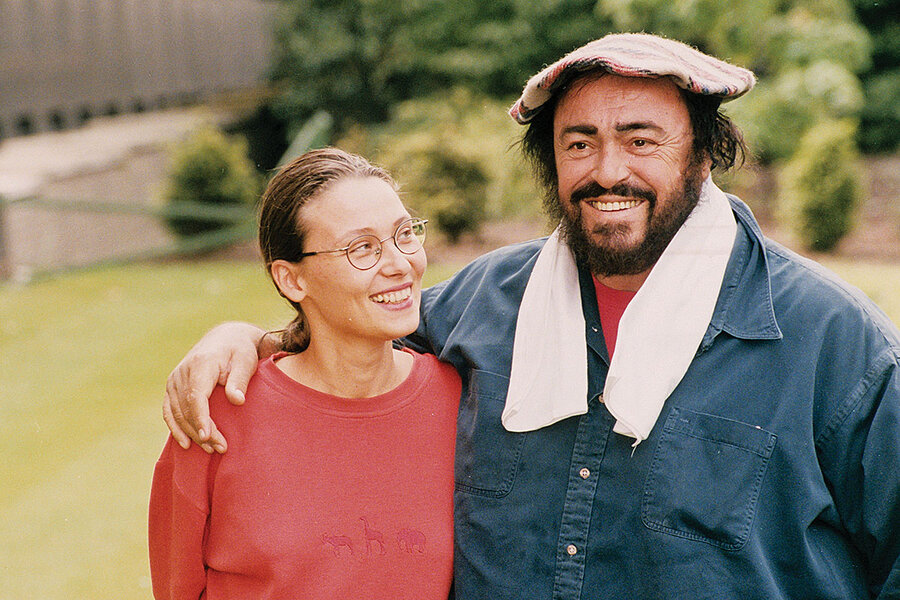Ron Howard’s ‘Pavarotti’ offers a tenor for the masses
Loading...
My favorite moment in Ron Howard’s documentary Pavarotti is when we see the great Italian tenor singing in the shower. For those of us who think we sound like Luciano Pavarotti while soaping up, this sequence is quite a comeuppance. Shower or no shower, only Pavarotti sounds like Pavarotti.
Howard’s engaging portrait of the great tenor occasionally verges on the hagiographic. But with singing like this, who can blame him? If he doesn’t really delve beneath the singer’s larger-than-life public persona, it’s probably because Pavarotti, who died in 2007 at the age of 71, was a showman to the core.
Documentaries of famous artists often disappoint because, especially if the artist is a writer or a painter, their creative process is usually not very photogenic. This is not the case with “Pavarotti,” which ranges over the singer’s life from his childhood in war-torn Modena, Italy, to his capture of the world’s stage and beyond.
Although Howard doesn’t go in for a lot of musicological analysis of Pavarotti’s genius, which would have enriched the presentation, he compensates by giving us an ample dose of the singing.
Pavarotti believed his voice was a gift from God, and, even at his zenith, he saw himself as that gift’s humble custodian. Although he ingenuously maintains in interviews through the film that he never consciously planned anything in his life, his rise to fame was swift. We see a video clip of his breakthrough success as Rodolfo in “La Bohème” in Reggio Emilia, Italy, in 1961. Watching it, we are as awestruck as was the audience on that night: You can’t believe your ears.
Despite the elitist trappings of the operatic world, Pavarotti wanted to be known as a singer who brought opera to the masses. This must be one reason why, after decades of success on the stage and in recitals, he often crossed over into the pop world, pairing with Bono, Sting, and others in concerts often undertaken for charity work. He was criticized for the transition, in much the same way that many classical music critics disdained his phenomenally successful Three Tenors concerts with José Carreras and Plácido Domingo as lucrative stunts. At least we’re spared a clip from his 1982 flop, “Yes, Giorgio,” his only foray into Hollywood stardom.
Pavarotti loved good food almost as much as he loved great opera, which is saying something. There’s a clip of him cooking his favorite pasta dish on “The Phil Donahue Show,” and in his world travels, he was known to transport valises of tortellini and prosciutto slicers. He had other cravings: His ex-wife Adua Veroni, who bore him three daughters in four years, remarks with rueful resignation on his dalliances. One suspects her bitterness runs deeper than we see here. Among other female idolaters, we hear from his second wife, Nicoletta Mantovani, a woman decades younger than himself with whom he had a daughter. He loved being spoiled by women.
It comes as something of a shock to discover that the “King of the High Cs,” on the surface so boundlessly joyous, endured terrible stage fright. Before venturing onstage he would regularly mutter to himself “I go to die.”
But maybe this fear is also a clue to his greatness: He never took his gifts for granted. Interviewed by Clive James on British TV, he is asked if he can ever be certain he will hit the notes, and his answer is a simple “No.” But we can spy in that uncertainty a rapturous reckoning. He knows that art is not something casually handed to him, that he must reach for it. When it all comes together, there is no greater ecstasy. Grade: B+ (Rated PG-13.)







